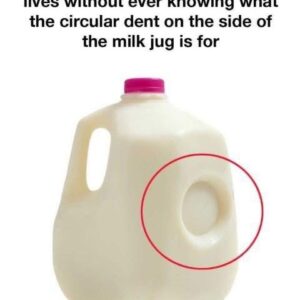The gesture of scratching the palm of someone else’s hand, particularly between a man and a woman, is one of those subtle forms of nonverbal communication that can carry a surprising range of meanings depending on cultural, social, and personal contexts. While at first glance it may seem like an insignificant action—just a brief tactile interaction—it can, in many circumstances, convey messages that words either fail to express or purposely avoid expressing. Nonverbal communication often functions in this way: small gestures operate as signals, hints, and emotional cues that help people navigate complex interpersonal relationships. The palm-scratching gesture is no exception.
In some cultures or social groups, this gesture holds a clearly romantic or even sexual connotation. It may be used as a discreet way of signaling interest, attraction, or flirtation. Because it can be done subtly—in the middle of a handshake, during the passing of an object, or even in a crowded environment where verbal communication is limited—it allows individuals to test boundaries or measure the other person’s reaction without drawing public attention. For example, in certain regions or among specific generations, scratching or lightly stroking someone’s palm during a handshake has traditionally been interpreted as a sign that one person is expressing desire or inviting more intimate interaction. In such settings, the gesture becomes a secretive language of touch, reserved for situations where the individuals involved prefer to keep their intentions private.
This interpretation ties into a broader understanding of touch as a meaningful form of communication. Touch can convey warmth, affection, curiosity, or intention far more quickly and subtly than spoken language. Because the palm is a particularly sensitive and expressive part of the body, a deliberate gesture there often stands out and may be perceived as purposeful rather than accidental. When a man and a woman engage in this interaction—whether intentionally or spontaneously—those familiar with the cultural meaning behind it might immediately recognize it as a sign of attraction.
However, it is vital to emphasize that this interpretation is far from universal. In many places around the world, the gesture carries no inherent romantic or sexual meaning at all. People may scratch someone’s palm simply because they are fidgeting, absent-minded, or unaware that the gesture could be interpreted symbolically elsewhere. In some cultures, physical touch is common and does not always represent intimacy. A tap on the hand, a light brush of the palm, or even a scratch might be nothing more than a natural part of physical interaction. Without a shared cultural background, two individuals may interpret the same gesture in completely different ways.
Context plays a crucial role in determining meaning. For instance, during a casual conversation, a moment of laughter, or a friendly exchange, someone might make this gesture unintentionally. If the interaction occurs between close friends, coworkers, or acquaintances who do not share a romantic history or subtext, the gesture may go unnoticed or be dismissed as an involuntary movement. Even within a romantic context, not all touches carry deeper meanings. People often use their hands to emphasize a point, release nervous energy, or engage in physical habits developed over many years. These behaviors do not always signal attraction or desire.
Another important factor is the personal relationship between the individuals involved. The same gesture can be interpreted differently depending on the level of familiarity, comfort, or closeness that already exists. If two people have a history of flirtation or mutual attraction, the gesture might reinforce or intensify those feelings. If, on the other hand, the relationship is strictly professional or formal, the gesture might feel awkward or confusing and could even be misinterpreted if one person ascribes meaning that the other never intended to express. Misinterpretations of nonverbal signals are common because people tend to project their own expectations, desires, or fears onto ambiguous gestures.
Additionally, generational differences can shape how this gesture is understood. Older generations in certain regions may be more familiar with the palm-scratching gesture as a discreet flirtatious symbol, while younger people may either not recognize it at all or view it as outdated. As global communication increases and cultural practices blend, many symbolic gestures lose their distinct meanings or evolve into new ones. Thus, what might have been interpreted as provocative or suggestive in one community decades ago could now be seen as meaningless or purely accidental.
To avoid misunderstandings, it is essential to consider both the broader cultural background and the specific circumstances in which the gesture occurs. Observing the person’s body language, tone of voice, eye contact, and general behavior can provide valuable clues. For example, if the palm-scratching happens alongside extended eye contact, a warm smile, or other signs of attraction, it may reinforce the idea that the gesture is intentional and meaningful. Conversely, if the individual appears distracted, nervous, or unaware of their actions, the gesture is more likely to be unintentional.
The best approach, especially when the meaning of the gesture is unclear, is to rely on context rather than assumptions. Nonverbal communication is powerful but often ambiguous, and many gestures do not have fixed, universal interpretations. A single action should not be taken as definitive evidence of romantic or sexual interest; rather, it should be seen as one possible clue among many. Understanding this helps prevent overinterpretation and promotes clearer, more respectful communication between individuals.
In conclusion, scratching someone else’s palm—particularly between a man and a woman—can range from a flirtatious signal to a completely meaningless gesture. Its significance depends heavily on cultural background, social norms, personal intentions, and the context in which it occurs. While some people may use the gesture deliberately to express attraction, others may do it without realizing that it could be interpreted as meaningful. Recognizing the complexity of nonverbal communication allows us to navigate these situations with greater awareness and sensitivity. Ultimately, the meaning of the gesture cannot be determined in isolation; it emerges from the interplay of touch, context, relationship, and perception.





